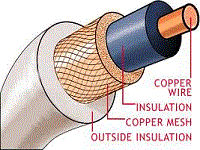Mercury Cell
The mercuric-oxide zinc cell or mercury cell, is a primary cell that was developed during World War II. Two important assets of this cell are its ability to produce current for a long period of time and a long shelf life when compared to the dry cell.
The mercury cell also has a very stable output voltage and is a power source that can be made in a small physical size.
With the birth of the space program and the development of small transceivers and miniaturized equipment, a power source of small size was needed. Such equipment requires a small cell which is capable of delivering maximum electrical energy at a constant discharge voltage.
Below is a cut-away view of this cell.

Illustration of a mercury-cell.
The mercury cell, which is one of the smallest cells, meets these requirements. Present cells are manufactured in three basic types.
The wound anode type has an anode composed of a corrugated zinc strip with a paper absorbent. The zinc is mixed with mercury, and the paper is soaked in the electrolyte which causes it to swell and press against the zinc and make positive contact. This process ensures that the electrolyte makes contact with the anode.
In the pressed-powder cells, the zinc powder for the anode is mixed prior to being pressed into shape. The absorbent in the figure is paper soaked in the electrolyte.
The space between the inner and outer containers provides passage for any gas generated by an improper chemical balance or impurities present within the cell.
If the anode and cathode of a cell are connected
together without a load, a SHORT CIRCUIT condition exists. Short
circuits (shorts) can be very dangerous. They cause excessive heat,
pressure, and current flow which may cause serious damage to the cell or
be a safety hazard to personnel.
(back)
(top)
(next)
(return to batteries page)

















